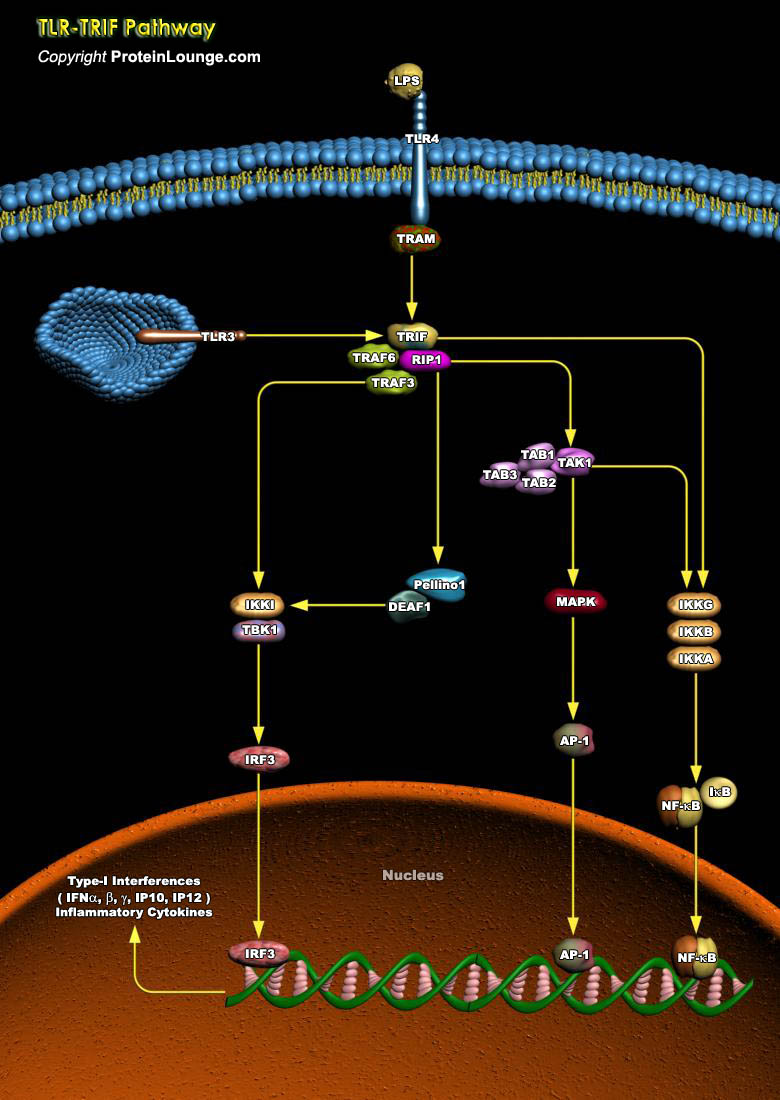
The Toll-like receptors (TLRs), 13 types known to-date, are a group of pattern-recognition receptors that play a crucial role in danger recognition and induction of the innate immune response against bacterial and viral infections. The major adaptors that bind to the intracellular domain of TLR to activate the proinflammatory response are the myeloid differentiation primary response MYD88 and TIR-domain-containing adapter-inducing interferon-beta (TRIF). TRIF-dependent signaling is required for TLR-mediated production of type-I IFN and several other proinflammatory mediators (Ref.1 and 2). The TLR adaptor molecule facilitates TLR3 and TLR4 signaling and concomitant activation of the transcription factors, NF-kappaB, AP-1 and IFN regulatory factor 3, leading to[..]

Cell cycle arrest in response to DNA damage is an important mechanism for maintaining genomic integrity. This cell cycle arrest provides time for DNA repair to prevent replication or segregation of damaged DNA. Induction of growth arrest by DNA damage occurs mainly through the activation of checkpoint pathways that delay cell cycle progression at G1, S, and G2 (Ref.1 and 2).In vertebrate cells, the commitment to complete a round of mitotic division takes place during the initial phase of the cell cycle (G1), at a stage called the restriction (R) point, preceding the onset of DNA synthesis (S-phase).The primary G1/S cell cycle checkpoint controls the commitment of eukaryotic cells to transition through the G1 phase to enter into the DNA synthesis S phase. Two cell cycle[..]
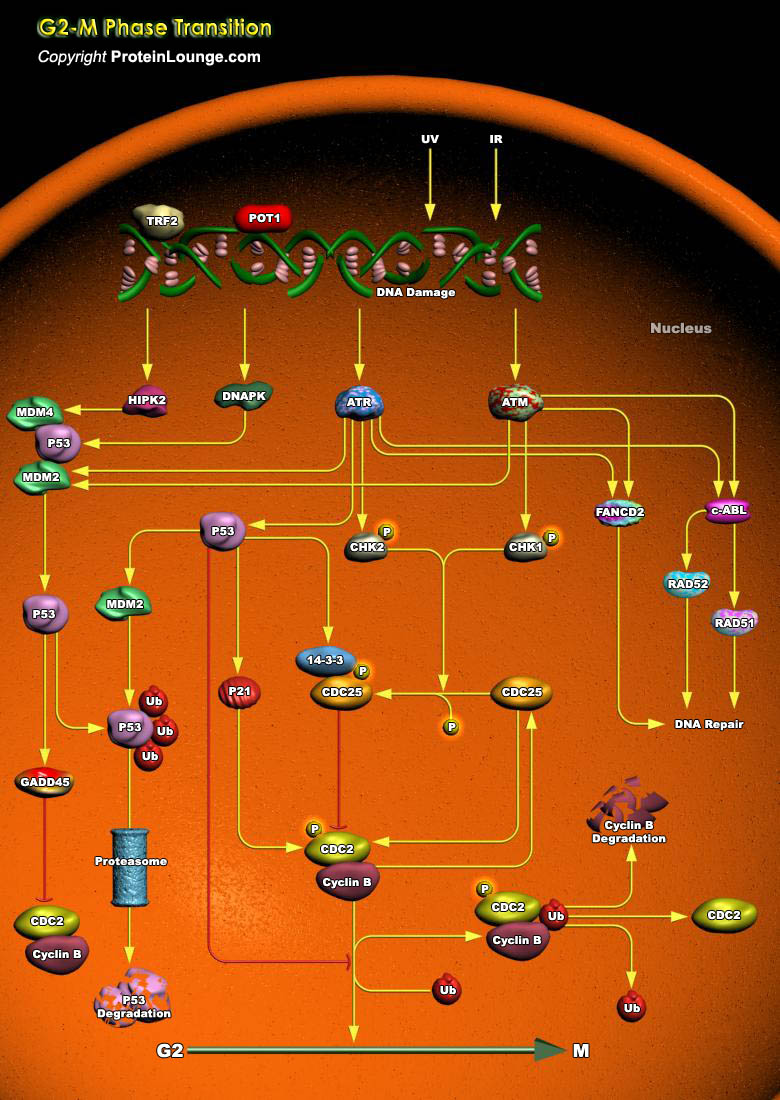
The cellular responses to DNA damage induced by ionizing radiation include activation of cell cycle checkpoints that delay progression of cells through the cell cycle. Ionizing radiation-induced checkpoints are active at the transition from the G1-phase to the S-phase, in the S-phase, and at the transition from the G2-phase to mitosis (G2/M). The surveillance mechanisms responsible for initiating these checkpoints appear to facilitate maintenance of the integrity of the genome, presumably because they ensure that damaged DNA templates are neither replicated nor segregated into the daughter cells until they are repaired. The option to undergo apoptosis can be considered as one of the checkpoint endpoints, and a failure of the cell to die under appropriate circumstances[..]
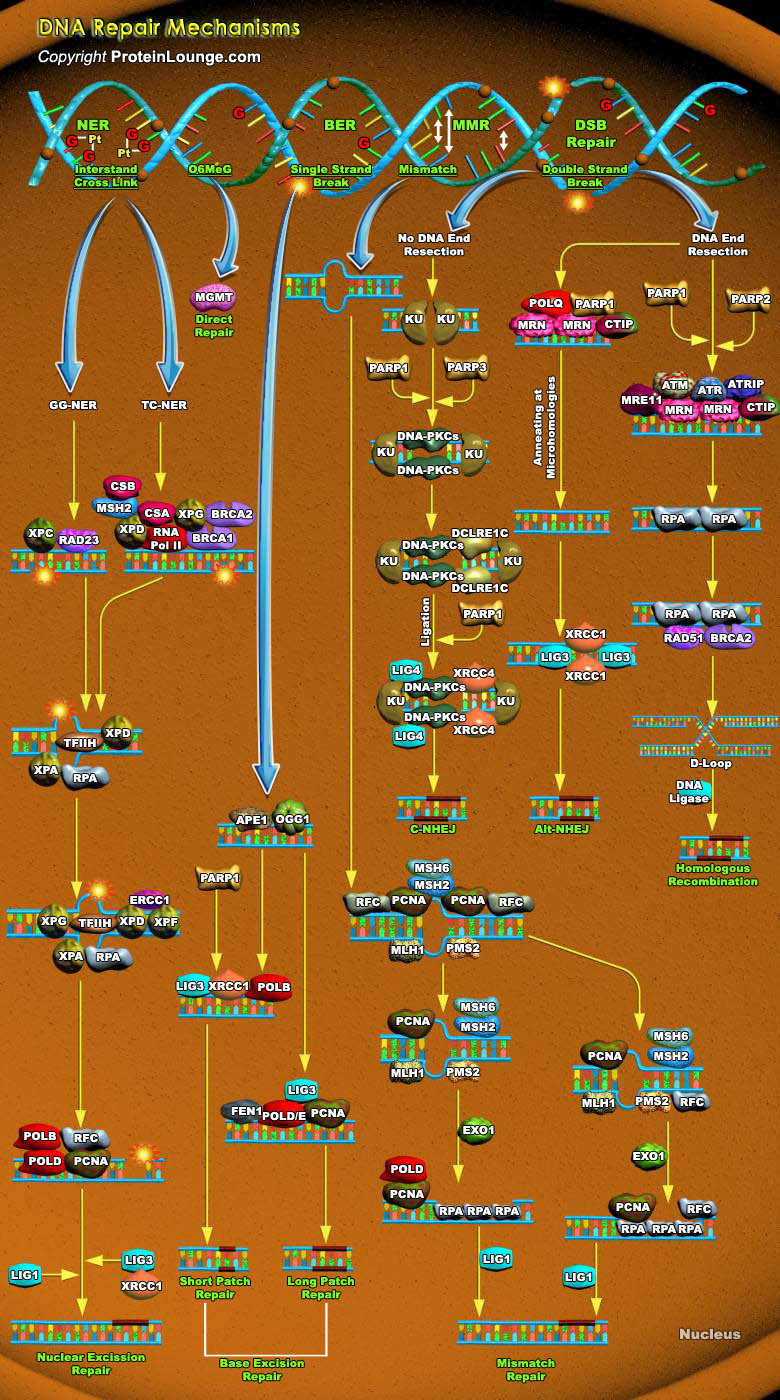
Cells are constantly under threat from the cytotoxic and mutagenic effects of DNA damaging agents that result from either endogenous sources (cellular metabolic processes) or exogenous sources (environmental factors). Endogenous sources of DNA damage include hydrolysis, oxidation, alkylation, and mismatch of DNA bases; sources for exogenous DNA damage include ionizing radiation (IR), ultraviolet (UV) radiation, and various chemicals agents (Ref.1). Repairing damage in DNA from anything that causes a mutation, such as UV radiation and tobacco smoke, is a fundamental process that protects our cells from becoming cancerous. The major forms of DNA damage include SSB (Single-strand Breaks), DSB (Double-strand Breaks), alteration of bases, hydrolytic depurination, hydrolytic[..]
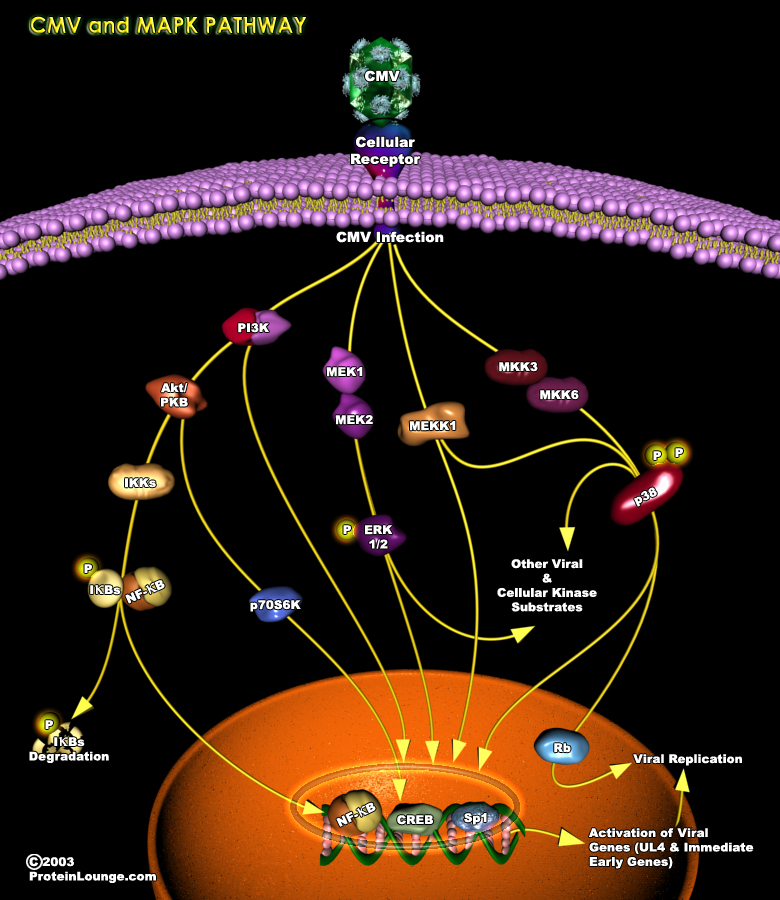
An upregulation of cellular signaling pathways is observed in multiple cell types upon HCMV(human cytomegalovirus) infection, suggesting that a global feature of HCMV infection is the activation of the host cell. HCMV initiates and maintains cellular signaling through a multitiered process that is dependent on a series of events: (1) the viral glycoprotein ligand interacts with its cognate receptor, (2) cellular enzymes and viral tegument proteins present in the incoming virion are released and (3) a variety of viral gene products are expressed. Viral-mediated cellular modification has differential outcomes depending on the cell type infected.Human CMV infects a significant portion of the human population and belongs to the family of beta-herpes virus(Ref.1&2).One[..]
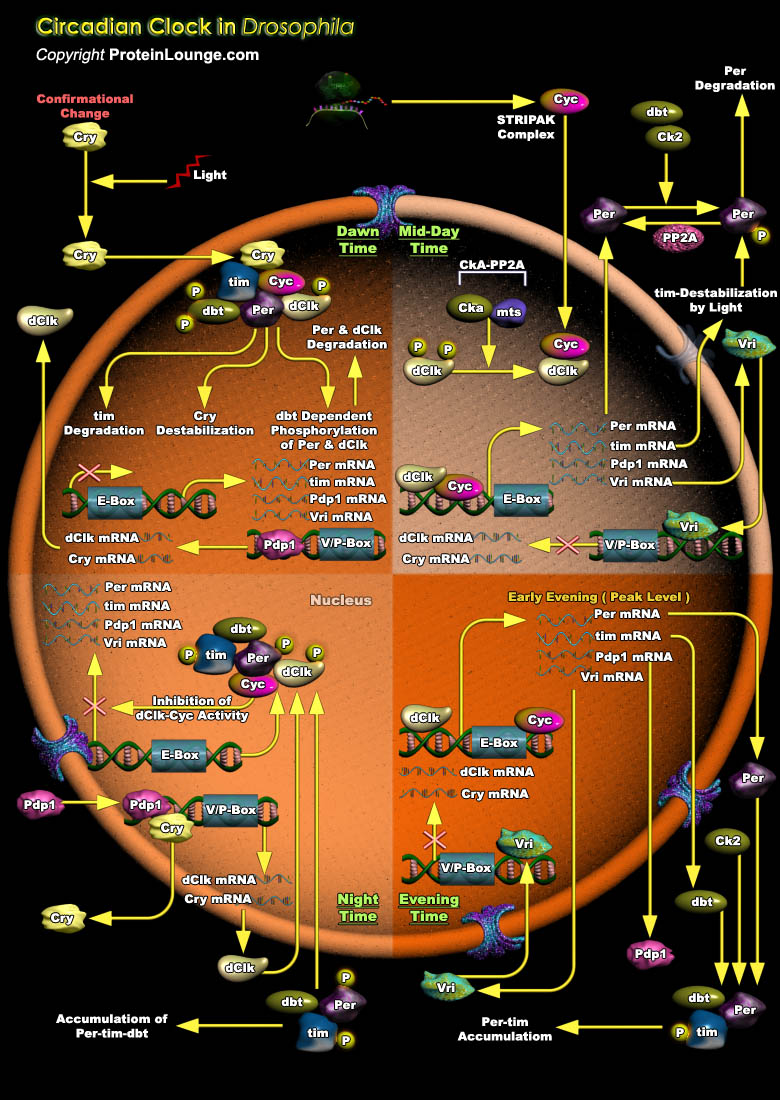
Circadian rhythms are daily rhythms of biological processes in behavior or physiology that reoccur approximately every 24 hr. They are determined and modified by environmental cues like light and temperature, but can also persist in the absence of these cues. Although circadian rhythms are present in nearly all living organisms, Drosophila melanogaster is used as model organism to study the phenomena due to many advantages including low genetic redundancy, functional simplicity, its clock regulated behavior including eclosion, olfactory sensitivity, egg laying , courtship, gustatory sensitivity or learning and memory, and the ability to conduct large-scale genetic screens (Ref.1). Circadian clocks consist of 3 parts: input pathway, circadian oscillator[..]

Circadian clocks are molecular time-keeping mechanisms that reside in a diverse range of cell types in a variety of organisms. The primary role of these cell-autonomous clocks is to maintain their own 24-hour molecular rhythm and to drive the rhythmic expression of genes involved in physiology, metabolism and behavior. The ability of the clock to persist in the absence of environmental cues provides internal temporal organization so that rhythmic activities can occur at characteristic times during the circadian cycle. In addition, two other clock properties, entrainment (that is, setting the clock to local time with respect to environmental cycles) and temperature compensation (that is, the ability of the clock to run at the same rate at different temperatures) ensure[..]
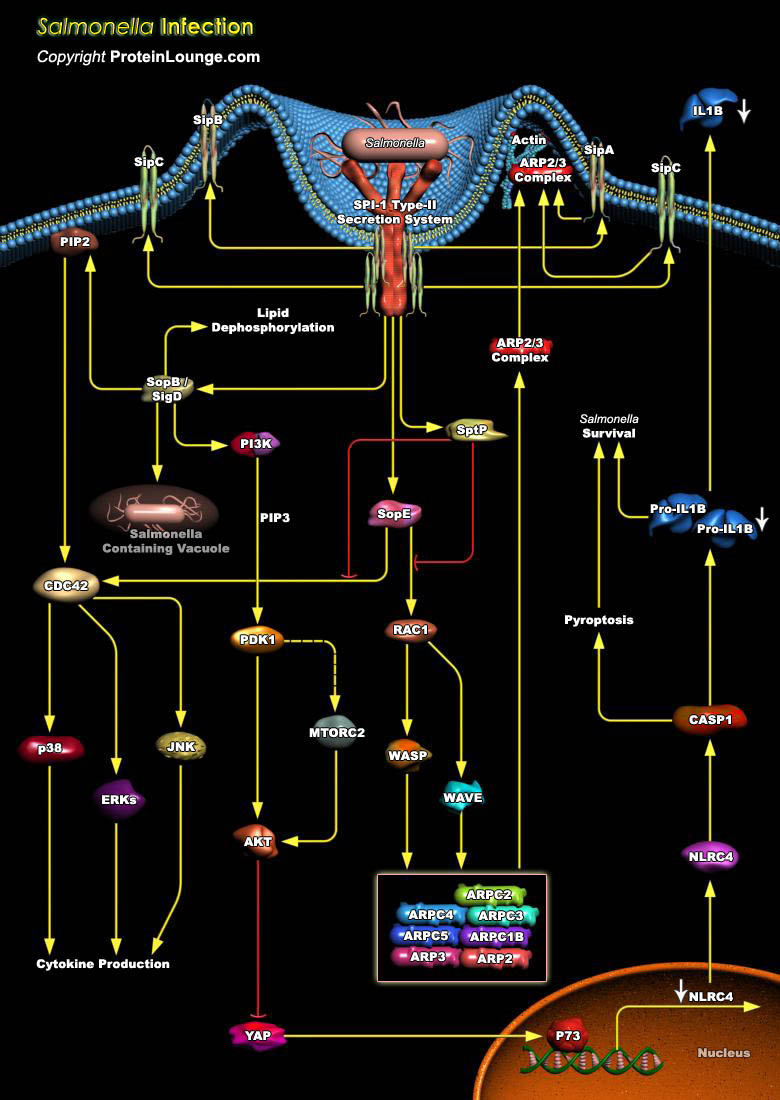
Phagocytic cells are a critical line of defense against infection. The ability of a pathogen to survive and even replicate within phagocytic cells is a potent method of evading the defense mechanisms of the host. A number of pathogens survive within macrophages after phagocytosis and this contributes to their virulence. Salmonella is one of these pathogens. Salmonella spp are Gram-negative bacteria capable of infecting a wide range of host species, including humans, domesticated and wild mammals, reptiles, birds and insects. They are the etiologic agents of a variety of diseases globally defined as salmonellosis. Salmonellosis is one of the most important human enteric diseases worldwide. Salmonella infections display a broad range of clinical manifestations that are[..]
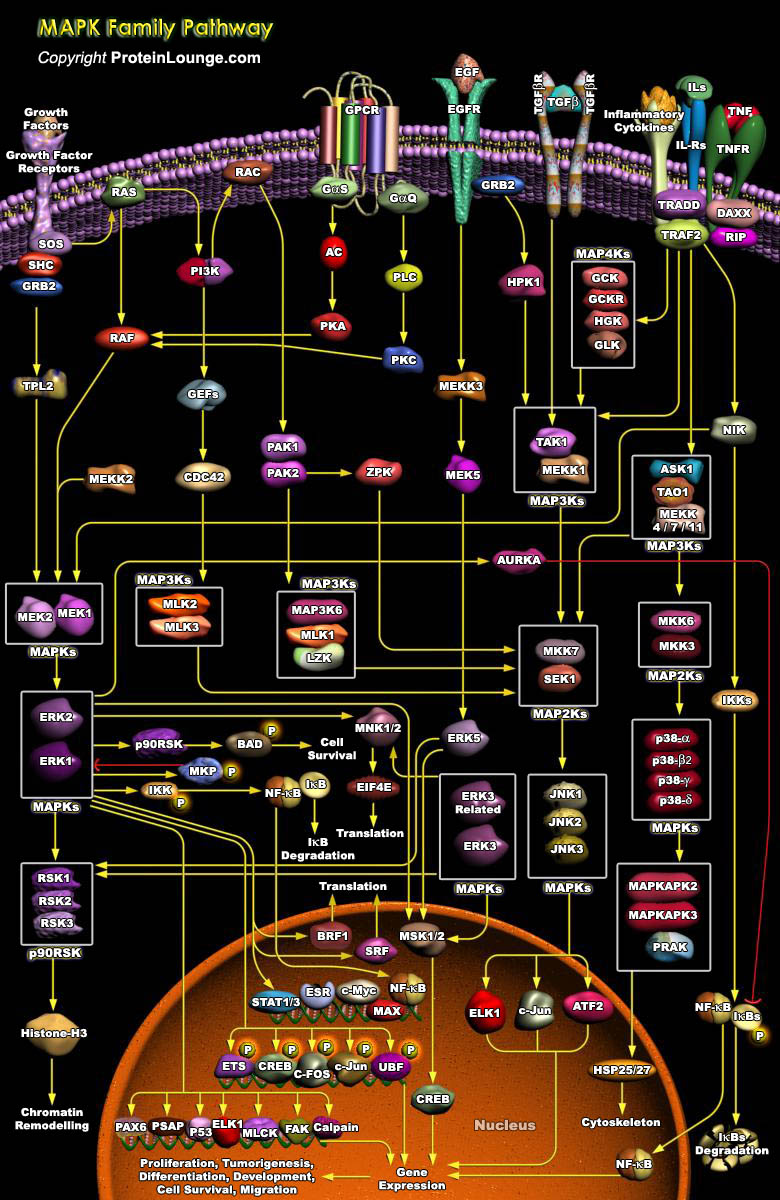
Protein kinases are ubiquitous enzymes that are able to modulate the activities of other proteins by adding phosphate groups to their tyrosine, serine, or threonine amino acids (phosphorylation). MAPKs (Mitogen-Activated Protein Kinases), which are activated by many different signals, belong to a large family of serine/threonine protein kinases that are conserved in organisms as diverse as yeast and humans. MAPKs deliver extracellular signals from activated receptors to various cellular compartments, notably the nucleus, where they direct the execution of appropriate genetic programs, including activation of gene transcription, protein synthesis, cell cycle machinery, cell death, and differentiation. A unique feature of MAPKs is that they themselves can be activated[..]
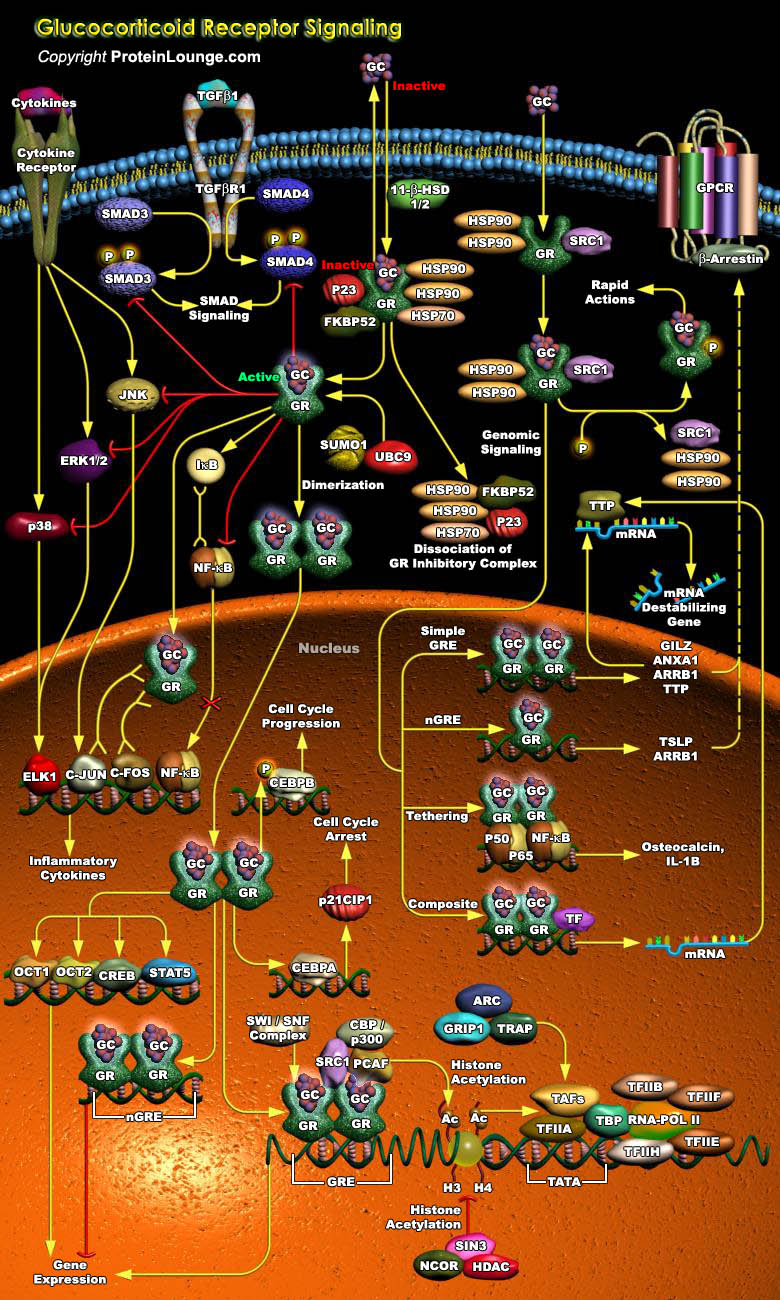
Our bones get more brittle with increasing age, and to add insult to injury, the most effective therapy for another problem that is associated with getting older, rheumatoid arthritis, often adds to the problem by causing bone resorption. The Glucocorticoid steroids, are the best available anti-inflammatories, and are used widely in the treatment of arthritis, as well as other inflammatory conditions such as dermatitis and autoimmune diseases. The Glucocorticoids, secreted by the Adrenal Cortex are powerful anti-inflammatory compounds due to their ability to inhibit all stages of the inflammatory response, from redness to wound healing to cell proliferation (Ref.1). They are powerful anti-inflammatory compounds that have the ability to inhibit all stages of the[..]

Apoptosis, necroptosis, and pyroptosis are the three major ways of PCD(programed cell death) following virus infection. Among them, apoptosis is the most extensively investigated PCD during viral infection. Apoptosis elicited by virus infection has both negative and positive influence on viral replication.Apoptosis is triggered by two distinct signaling pathways, namely the intrinsic and extrinsic pathways(Ref.1).The intrinsic apoptotic pathway is elicited by a wide range of intracellular stress conditions, including cytokine deprivation, DNA damage, oxidative stress, cytosolic Ca2+ overload and endoplasmic reticulum stress whereas the extrinsic apoptotic pathway is activated by extracellular stress stimulation that is sensed and triggered through activation of death[..]
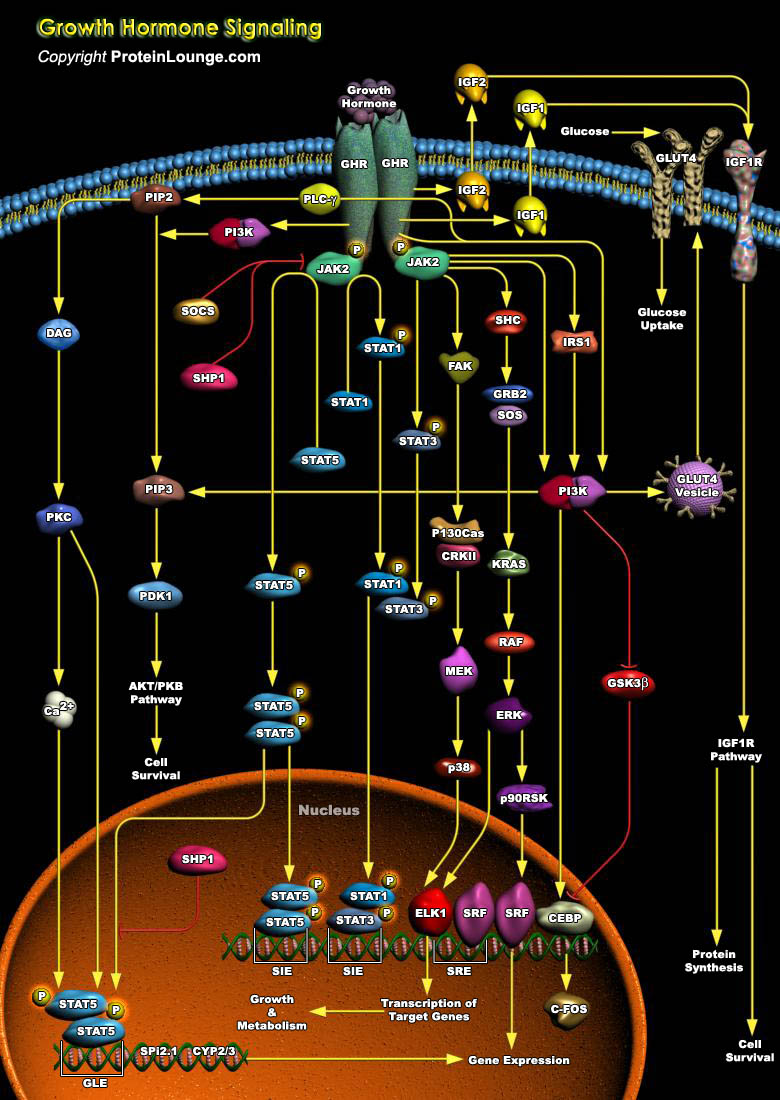
Most aging individuals die from atherosclerosis, cancer, or dementia; but in the oldest old, loss of muscle strength resulting in frailty is the limiting factor for an individual's chances of living an independent life until death. Three hormonal systems show decreasing circulating hormone concentrations during normal aging: (i) estrogen (in menopause) and testosterone (in andropause), (ii) dehydroepiandrosterone and its sulphate (in adrenopause), and (iii) the growth hormone/IGF1 axis (in somatopause). Physical changes during aging have been considered physiologic, but there is evidence that some of these changes are related to this decline in hormonal activity. Science recognizes aging as a disease that can be reversed to a large degree by increasing GH (Growth[..]

